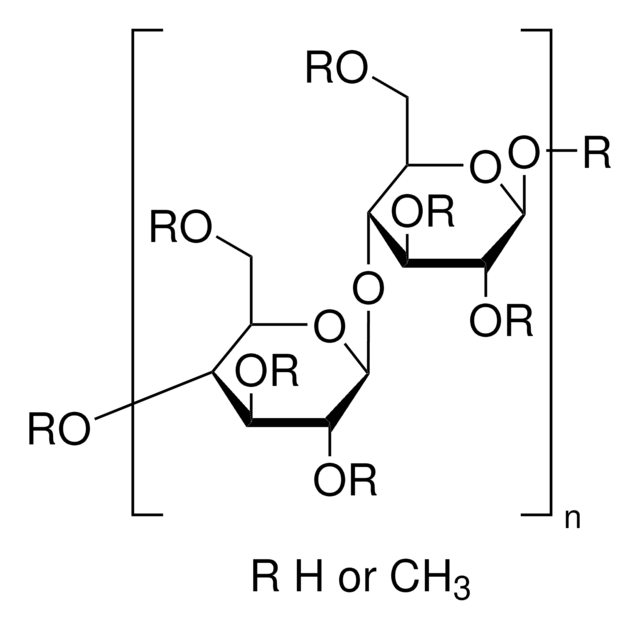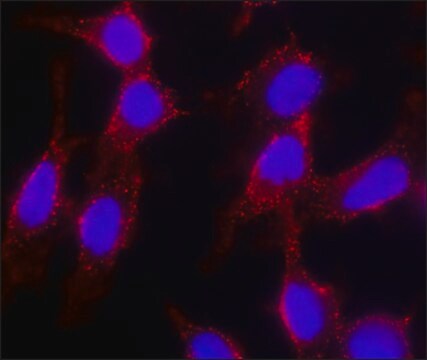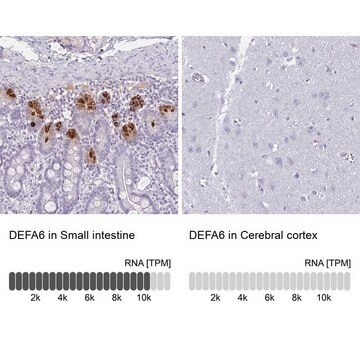HTS005M
ChemiSCREEN CCR1 Membrane Preparation
Human CCR1 GPCR membrane preparation for Radioligand binding Assays.
Se connecterpour consulter vos tarifs contractuels et ceux de votre entreprise/organisme
About This Item
Code UNSPSC :
41106514
eCl@ss :
32161000
Nomenclature NACRES :
NA.84
Produits recommandés
Source biologique
human
Niveau de qualité
Produit recombinant
expressed in Chem-2 cells
Fabricant/nom de marque
ChemiScreen
Chemicon®
Concentration
0.5 mg/mL
Technique(s)
radioligand binding assay (RLBA): suitable
Numéro d'accès NCBI
Numéro d'accès UniProt
Conditions d'expédition
dry ice
Informations sur le gène
human ... CCR1(1230)
Description générale
CCR1 is a GPCR that binds to a variety of CC ligands, including MIP-1a, RANTES, MCP-3, HCC-1, HCC-2, HCC-4, and MPIF-1 (Olson and Ley, 2002). Lymphocytes, macrophages, dendritic cells, and GM-CSF-activated neutrophils express CCR1 (Kaufmann et al., 2001; Cheng et al., 2001). Two selective, non-peptide small molecule antagonists of CCR1, BX-471 and CP-481,715, have been synthesized (Gladue et al., 2003; Liang et al., 2000). Pharmacological and genetic targeting of CCR1, either alone or in combination with cyclosporin A, reduces cardiac and renal allograft rejection (Gao et al., 2000; Horuk et al., 2001a; Horuk et al., 2001b), allergic encephalomyelitis (Liang et al., 2000), and renal fibrosis (Anders et al., 2002) in experimental models. Chemicon′s CCR1 Membrane Preparations are ideal for screening molecules that disrupt interaction between CCR1 and its ligands. The CCR1 Membrane Preps bind to MIP-1a with a Kd of 1.8 nM, and yield greater than 10-fold signal to background ratio with a MIP-1a concentration of 0.1 nM.
Full-length human CCR1 cDNA
Application
Radioligand binding assay.
Actions biochimiques/physiologiques
GPCR Class: A
Protein Target: CCR1
Target Sub-Family: Chemokine
Qualité
SPECIFICATIONS:
Bmax for [125I]MIP-1alpha binding: 3.3 pmol/mg protein
Kd for [125I] MIP-1alpha binding: ~ 1.8 nM HOST CELLS:
Bmax for [125I]MIP-1alpha binding: 3.3 pmol/mg protein
Kd for [125I] MIP-1alpha binding: ~ 1.8 nM HOST CELLS:
Forme physique
Liquid in packaging buffer: 50 mM Tris pH 7.4, 10% glycerol and 1% BSA with no preservatives.
Packaging method: Membranes protein were adjusted to the indicated concentration in packaging buffer, rapidly frozen, and stored at -80°C.
Each vial typically contains 500 units, where one unit is the amount of membrane prep that yields greater than 1000 cpm specific binding of 125I-labeled MIP-1α (0.1 nM input concentration).
Packaging method: Membranes protein were adjusted to the indicated concentration in packaging buffer, rapidly frozen, and stored at -80°C.
Each vial typically contains 500 units, where one unit is the amount of membrane prep that yields greater than 1000 cpm specific binding of 125I-labeled MIP-1α (0.1 nM input concentration).
Stockage et stabilité
Maintain frozen at -70°C for up to 2 years. Do not freeze and thaw.
Informations légales
CHEMICON is a registered trademark of Merck KGaA, Darmstadt, Germany
Clause de non-responsabilité
Unless otherwise stated in our catalog or other company documentation accompanying the product(s), our products are intended for research use only and are not to be used for any other purpose, which includes but is not limited to, unauthorized commercial uses, in vitro diagnostic uses, ex vivo or in vivo therapeutic uses or any type of consumption or application to humans or animals.
Code de la classe de stockage
12 - Non Combustible Liquids
Classe de danger pour l'eau (WGK)
WGK 2
Point d'éclair (°F)
Not applicable
Point d'éclair (°C)
Not applicable
Certificats d'analyse (COA)
Recherchez un Certificats d'analyse (COA) en saisissant le numéro de lot du produit. Les numéros de lot figurent sur l'étiquette du produit après les mots "Lot" ou "Batch".
Déjà en possession de ce produit ?
Retrouvez la documentation relative aux produits que vous avez récemment achetés dans la Bibliothèque de documents.
S S Cheng et al.
Journal of immunology (Baltimore, Md. : 1950), 166(2), 1178-1184 (2001-01-06)
Neutrophils (polymorphonuclear leukocytes; PMN) are phagocytic cells instrumental in the clearance of infectious pathogens. Human PMN are commonly thought to respond primarily to chemokines from the CXC family. However, recent findings suggest that under specific cytokine activation conditions, PMN can
Notre équipe de scientifiques dispose d'une expérience dans tous les secteurs de la recherche, notamment en sciences de la vie, science des matériaux, synthèse chimique, chromatographie, analyse et dans de nombreux autres domaines..
Contacter notre Service technique






